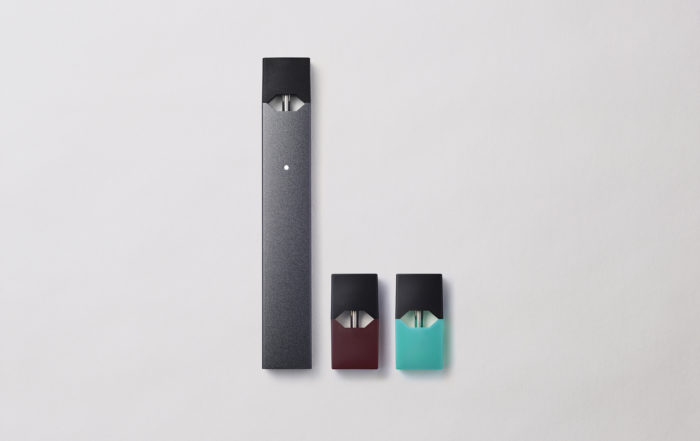
Food and Supplement Class Action Suits That Rely on Alleged Regulatory Violations
Historically, the majority of consumer class actions against food and dietary supplement companies were brought under state consumer protection statutes and premised on claims that consumers were misled by a product’s advertising or labeling. In other words, class actions against food and supplement companies have traditionally been based on allegations of deceptive advertising, not regulatory compliance.
That, however, is starting to change.[1] As the food and supplement industries have evolved, and companies have streamlined their advertising and stopped using obviously problematic claims like “natural,” “all natural,” or “no artificial ingredients,” challenges have emerged that are premised instead on alleged violations of complex regulatory schemes, as opposed to deceptive advertising or marketing, per se.
While it is well settled that consumers cannot privately enforce the Federal Food, Drug, and Cosmetic Act (FDCA),[2] litigants have employed a variety of approaches premised on state consumer protection statutes to indirectly bring the FDCA into play.
Most of these cases have been filed in California, with the U.S. District Court for the Northern District of California being the most frequent forum. California’s Unfair Competition Law gives consumers a cause of action for almost any regulatory violation, even if the regulation does not expressly permit consumer enforcement.
This article highlights risk mitigation approaches companies may employ to address these types of claims.
Product Classification Cases
Often prompted by warning letters from the Food and Drug Administration (“FDA Warning Letters”), these cases have primarily been brought against supplement companies selling products containing ingredients (CBD, for example) that are still under review by FDA. They are premised on the notion that such products are adulterated under the Dietary Supplement Health and Education Act of 1994 (DSHEA) and the FDCA and are not dietary supplements at all, but rather unapproved drugs.
In an early case espousing this theory, the plaintiffs alleged that a supplement company was improperly marketing certain sports nutrition products as dietary supplements because they contained new dietary ingredients and the company had not complied with FDA’s 75-day pre-market notice requirement. Because the plaintiffs’ claims were premised on an alleged violation of the FDCA, the defendant moved to dismiss on the grounds that the plaintiff was improperly attempting to privately enforce the FDCA.
The district court agreed and granted the plaintiffs’ motion, ruling that the plaintiffs’ attempt to hold the defendant liable for an alleged violation of the FDCA via California and Illinois consumer protection statutes and unfair competition law was improper and dismissed all of the plaintiffs’ claims premised on violation of the 75-day premarket notice requirement.[3]
Recently, two different sets of plaintiffs sought to employ class actions against a supplement company alleging that the company’s weight loss products contained an ingredient that had not been approved by FDA and the products were therefore adulterated and not properly classified as dietary supplements. The plaintiffs alleged violations of various California and New York consumer protection laws.[4]
While the plaintiffs based their claims on deceptive labeling, their argument was predicated on the fact that the products were labeled as “dietary supplements.” The plaintiffs relied on FDA Warning Letters and asserted that the challenged ingredient was either a “new dietary ingredient” for which FDA had not received the required new dietary ingredient (NDI) notification or it was an unsafe food additive.
The defendant responded that the matter wasn’t an advertising case at all, but a product classification case. Namely, the plaintiffs were asking the court to assume regulatory powers and determine whether a product met the statutory definition of a dietary supplement under DSHEA, which was outside of the court’s remit. Ultimately, both courts, one in the Central District of California and the other in the Northern District of California, agreed. The Central District dismissed the case on primary jurisdiction grounds and the Northern District entered a stay until June 2021, which will be converted to a dismissal without prejudice if FDA does not take final agency action before then in connection with the ingredient in question.[5]
Similar theories have been employed against companies selling CBD products. Such class actions allege that CBD products are illegally labeled and marketed as either dietary supplements or food.
FDA’s position on CBD has been widely publicized in agency statements and in numerous FDA Warning Letters.[6] Because FDA Warning Letters do not constitute final agency action, and FDA in guidance statements has made it clear that it is working on developing regulatory pathways for the lawful marketing of cannabis and cannabis-derived products, motions to stay based on the primary jurisdiction doctrine[7] continue to be effective in addressing these suits.
Most recently, the Central District of California issued a pair of orders staying two class action suits against different companies selling CBD products on primary jurisdiction grounds. The court granted both companies indefinite stays until “the FDA completes its rulemaking and/or Congress passes legislation regarding the definitions, marketing, and labeling of CBD products.”[8] The court observed that greater clarity was needed on whether CBD products are drugs, dietary supplements, or food products, and what standards should apply to these products.
Vanilla Flavoring Cases
In the last two years, the food and beverage industry has encountered lawsuits predicated on the absence in the product labeling of certain qualifying language required by FDA regulations. When a product does not contain enough of a commonly expected ingredient to independently characterize the flavor, and instead uses natural and/or artificial flavors, certain qualifying language is required such as “flavored,” “naturally flavored,” or “artificially flavored,” among others, to signal there are additional flavor ingredients in the product.[9]
Plaintiffs assert that when a product (e.g., vanilla flavored dairy or alternative dairy products, ice cream, almond milk, or soy milk) is characterized as “vanilla” without the required qualifying terms, consumers presume that the entire flavor profile is derived from vanilla beans and therefore, any product labeling that does not exactly match FDA regulations is misleading.
Most of these cases are in their infancy, and it is unclear whether courts will leave the technical compliance issue to FDA or let the cases proceed. Since the focus of these actions is on consumer deception, as opposed to technical compliance with FDA regulations, it seems likely that courts will allow the cases to proceed. However, there are a large number of motions to dismiss pending, and the landscape for “Vanilla flavored” litigation may change.
Nutrient Content Claims
Nutrient content claims refer to the amount of a nutrient in a product or compare the levels of a nutrient in that food to a similar food. When referring to the amount of a nutrient in a product, words such as “low,” “free,” and “high” are often used. Examples include “low-calorie,” “high-fiber,” “sugar free,” and “fat free.” Nutrient content claims that compare levels of a nutrient employ words like “reduced,” “more,” and “light.” Examples include “reduced sodium” or “more fiber.” The Nutrition Labeling and Education Act of 1990 permits the use of label claims that characterize the level of a nutrient in a food (i.e., nutrient content claims) if they have been authorized by FDA and are made in accordance with FDA’s authorizing regulations.
Food and supplement makers have recently seen class action lawsuits predicated on an alleged failure to comply with FDA’s authorizing regulations related to nutrient content claims. For example, FDA regulations require that products that are labeled “sugar fee” that are not “low” or “reduced calorie” foods must include immediately accompanying warnings disclosing that the product is “not a reduced calorie food,” or “not a low calorie food” or “not for weight control.”[10]
Some might argue that failure to include the required warning is merely a technical violation that could not possibly mislead a reasonable consumer because the number of calories is listed on the label. In other words, the information that is intended to be conveyed by the missing qualification is actually available on the label itself.
However, plaintiffs’ lawyers have maintained that in the 9th Circuit, the “reasonable consumer test”[11] is a requirement under the “unlawful” prong of California’s Unfair Competition Law (UCL) only when it is an element of the predicate violation, relying on the 9th Circuit’s decision in Bruton v. Gerber Products Company.[12] Plaintiffs have asserted that because these types of claims are predicated on violations of California’s Sherman Law, which incorporates standards set by FDA regulations, and because FDA regulations such as the one requiring certain warnings for foods that are “sugar free” but not low calorie include no requirement that a reasonable consumer be deceived, even a bare technical violation of FDA regulations gives rise to a claim under California’s UCL.
Despite these arguments, the 9th Circuit does not appear ready to abandon the “reasonable consumer” test. Recently, the Northern District of California held that no reasonable consumer could be deceived regarding a product’s sugar content and whether it may or may not be healthy as a result, “when the product’s label plainly discloses the amount of sugar in the product.”[13] Similarly, the Northern District of California also held that “[n]o consumer, on notice of the actual ingredients described on the packing including honey and sugar, could reasonably overestimate the health benefits of the bar merely because the packaging elsewhere refers to it as a health bar . . . .”[14]
While these lawsuits seem to be on the rise, it is difficult to track to what extent. Most start with private, pre-suit demand letters, and while there are many filed lawsuits asserting these kinds of claims, most are disposed of outside of court to avoid the time and expense associated with protracted litigation.
Conclusion
While these types of cases may be on the rise, food and supplement companies can take steps to mitigate the risks:
First, a manufacturer should ensure that labels comply with governing FDA regulations. If a company has never done a label review, or hasn’t done one in several years, it’s always beneficial to conduct an audit of all current labeling and marketing materials to ensure that they are compliant with current FDA regulations.
Second, manufacturers should review labeling and advertising not just from a technical compliance perspective, but also from the vantage point of a consumer to ensure that the company isn’t making express or implied claims that cannot be substantiated
Third, a manufacturer should review and ensure adequate and solid substantiation for any and all claims (express or implied) about products.
Finally, a manufacturer encountering such a suit may wish to consider whether preemption or primary jurisdiction defenses can be asserted at the outset to avoid protracted litigation.
[1] The Center for Science in the Public Interest (CSPI) was an early adopter of using regulatory violations to undergird claims that certain advertising violated state consumer protection laws. In October 2016, CSPI filed a complaint in the U.S. District Court for the Eastern District of New York alleging that PepsiCo marketed its Naked line of beverages in a false and misleading manner, in violation of state consumer protection and unfair competition laws. Lipkind v. Pepsico, Inc. No. 1:16cv-05506. In furtherance of these allegations, CSPI asserted that PepsiCo’s “no sugar added” claim was misleading and violated 21 C.F.R. §§ 101.2 and 101.60(c)(2)(v) because it was not sufficiently prominent and omitted the instruction to seek “further information on sugar and calorie content.” The Complaint was voluntarily dismissed in September 2017.
[2] 21 U.S.C. § 337(a) (“[A]ll such proceedings for the enforcement, or to restrain violations, of [the FD&C Act] shall be by and in the name of the United States.”).
[3] Dabish v. Muscelpharm Corp., Civil Action No. 3:15cv02848 – CAB-RBB.
[4] Rosas v. Hi-Tech Pharmaceuticals, Case No. CV 20-00433-DOC-DFM, 2020 WL 5361878 (July 29, 2020); Ottesen v. Hi-Tech Pharmaceuticals, Inc., Case No. 19-cv-07271-JST.
[5] Rosas v. Hi-Tech Pharmaceuticals, Case No. CV 20-00433-DOC-DFM, 2020 WL 5361878 (July 29, 2020); Ottesen v. Hi-Tech Pharmaceuticals, Inc., Case NO. 19-cv-07271-JST, Document No. 56.
[6] See Press Release, U.S. Food & Drug Admin. FDA Warns Companies Illegally Selling Over-the-Counter CBD Products for Pain Relief (Mar. 22, 2021), https://www.fda.gov/news-events/press-announcements/fda-warns-companies-illegally-selling-over-counter-cbd-products-pain-relief.
[7] Primary jurisdiction is a prudential court doctrine that allows courts to stay, or less commonly, dismiss, matters pending initial decision-making within the competence of an administrative agency. Clark v. Time Warner Cable, 523 F.3d 1110 (9th Cir. 2008).
[8] Dasilva v. Infinite Prod. Co., No. 2:19-cv-10148 (C.D. Cal. Mar. 3, 2021); David v. cbdMD, Inc., No. 2:19-cv-10241 (C.D. Cal. Mar. 3, 2021).
[9] 21 C.F.R. § 101.22 (i).
[10] 21 C.F.R. § 101.60(c)(1)(iii).
[11] Because a claim’s meaning can be subjective, nearly all states use the “reasonable consumer” standard. It is an objective standard that is not based on whether the consumer filing the suit was misled, but rather on whether a reasonable consumer would likely have been misled under the circumstances.
[12] 703 Fed. Appx. 468, 2017 WL 3016740 *2 (9th Cir. July 17, 2017).
[13] Truxel v. General Mills Sales, Inc., 2019 WL 3940956 (N.D. Cal. Aug. 13, 2019).
[14] Clark v. Perfect Bar, LLC, 2018 7048788 (N.D. Cal. Dec. 21, 2018).
Author Happy Hour
Update Magazine
Summer 2021








